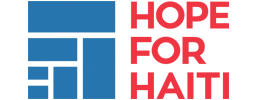 Magneure Jean comes to monitor her blood glucose level. |
May 23, 2010
Colloquially, diabetes in Haiti is known as suffering from “sugar.” Some have too much, others have too little, and almost everyone lacks the resources to control it. Recently, the irregular blood glucose levels, constant monitoring, restricted diets, and extreme fluctuations in weight and health that accompany this disease have become a chronic challenge to Hope for Haiti’s Emergency Medical Relief program.
Over the last few months, we’ve identified and treated multiple cases of both Type I and Type II diabetes at the Hope for Haiti Infirmary in Les Cayes and the Don Bosco Clinic in Carrefour. Elderly men and women are just as vulnerable as young girls and boys and many cases, left untreated, are life threatening.
Eighteen-year-old Auguste Féline comes from Beaumond, a town six hours west of Les Cayes. After entering a coma in her home and local hospital, Auguste’s family brought her to the general hospital in Les Cayes. When she arrived, however, she found no doctors available to treat her. Luckily, Hope for Haiti’s Dr. Steeve Victor was visiting another patient and able to diagnose her case: severe Type I Diabetes.
Auguste spent 18 days in a private hospital with Hope for Haiti’s finances and Dr. Victor and Dr. Elmide’s supervision. She took meds, learned to monitor her own blood glucose levels, and has made an incredible recovery. At first, her average blood glucose reading was 222, with extreme reports around 300 or 400 (the American Diabetes Association cites an average reading between 90 and 130 mg/dL). A month later, she reported a blood glucose reading of only 91. Not only is her treatment working, Auguste is also showing impressive responsibility in managing her condition.
Magneure Jean, a twenty-six-year-old resident of Les Cayes, was not more than a skeletal frame when she came to check her blood glucose at the HFH Infirmary. It was no surprise that several tests with multiple glucometers would only render one reading: HIGH. Too high for a number, over a lethal 600 mg/dL. After weeks of treatment and in-patient care with one of our local partners, Mother Teresa’s Sisters of Charity, Magneure is also recovering. She’s putting on weight, sleeping well, and reading a much more manageable blood glucose level of around 300.
Although Magneure and Auguste’s cases are particularly severe, their conditions are not uncommon. Thanks to the flexibility of our Emergency Medical Relief program and the expertise of our staff, we’re ready to treat them as effectively as the next ones.
 Magneure Jean on IV fluids at the HFH Infirmary. |
 Auguste Féline after a month of treatment |
 Auguste Féline accompanied by her brother at the HFH Infirmary |
 Waking up to Hope |
May Medical Mission Update
Part II: Partnering at the HFH InfirmaryMay 7, 2010
Our six-person volunteer team and in-country staff spent the last two days of their Medical Mission at the Hope for Haiti Infirmary in downtown Les Cayes. Working alongside Hope for Haiti doctors Steeve Victor and Elmide Nazaire, the group confronted many of the same health issues as in the rural areas, this time concentrated in the city.
While treating numerous cases of diabetes and high blood pressure, nurse practitioner Monna Lesperance was most concerned about follow-up. In the Haitian healthcare environment, how can we provide not just treatment but also consistent care? Medications that regulate blood pressure or control blood glucose levels must be used regularly, which requires that patients have a dependable, accessible source of these medications and a provider whom they trust. From what we saw this week – returning patients with files and charts, records of treatment histories and appointment cards – the Hope for Haiti Infirmary has successfully become that stable healthcare force.
 Nurse Daphné (right) consults with Dr. Elmide Nazaire |
 Executive Director, Elizabeth Davison, after taking vital signs on a patient |
 A girl with her medications outside the HFH Infirmary |
 Nurse Connie Wheeler checks out a child |
Frantz Clauzel Jacques, a translator for the Hope for Haiti team, was more concerned with the challenge of access. “To bring medical care to people who would not otherwise have it…to me, that is the greatest,” he said. Whether the patients are in urban centers or rural areas-like Clauzel’s hometown of Morency, nestled outside Cayes between the mountains and the sea and another site for Hope for Haiti Mobile Clinics-the value of access that volunteer teams help provide is immeasurable. For Clauzel, what matters is a realization of circumstance: when arbitrary factors like location and income determine who gets healthcare and who doesn’t, something has to be done. “After all,” he admits, speaking of the healthcare situation many Haitians are in, “I could be there, too.”
The final and most inspiring part of the week’s experience was the collaboration between the Haitian and visiting medical professionals. Working side by side to treat an increased number of patients and consulting with each other on complicated cases, the doctors and nurses found a common cause and developed a shared expertise that far exceeded any of their own individual talents.
Our next Medical Mission is scheduled for July. Until then, Hope for Haiti’s local doctors and nurses will continue operating the Infirmary, working every day to continue the mission that this amazing volunteer team helped emphasize.
